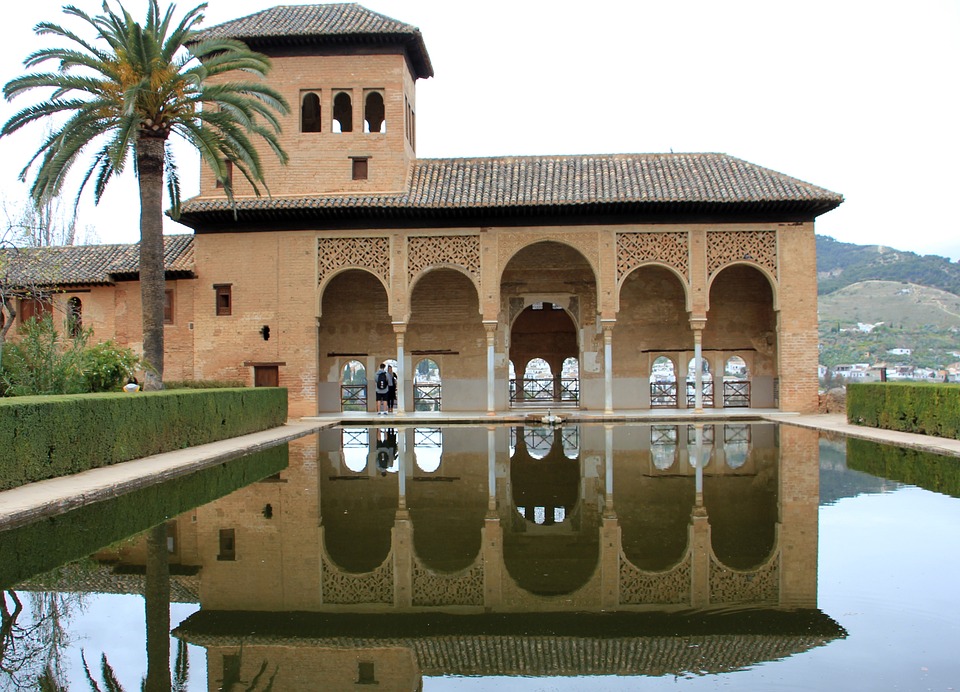Introduction
Granada, situated in the heart of Andalusia, Spain, is a city bursting with history and culture. Its magnificent Moorish legacy left behind an indelible mark that still captivates visitors today. From the grandeur of the Alhambra to the narrow winding streets of the Albaicín neighborhood, Granada offers a unique opportunity to retrace the footsteps of Spain’s Golden Age.
The Alhambra: A Jewel of Islamic Architecture
The Alhambra, a UNESCO World Heritage site, stands as the most renowned monument of Moorish culture in Granada. Built during the 14th century, this sprawling fortress complex showcases the pinnacle of Islamic art and architectural brilliance. Its ornate Nasrid Palaces, stunning courtyards, and lush Generalife gardens transport visitors back in time to experience the opulence and sophistication of the Nasrid dynasty.
Wandering through the intricate halls of the Alhambra, one can admire the intricate stucco decorations, geometric patterns, and serene gardens that epitomize Islamic design principles. Majestic structures such as the Court of the Lions and the Palace of Charles V inspire awe, providing a glimpse into the opulent lifestyle of the Moorish rulers.
The Albaicín: A Timeless Moorish Neighborhood
As you step into the labyrinthine streets of the Albaicín neighborhood, you are transported to the days of Al-Andalus. This ancient Moorish quarter features narrow winding alleys, traditional white-washed houses, and breathtaking views of the Alhambra. Strolling through the Albaicín, you can immerse yourself in the vibrant atmosphere and discover hidden gems at every corner.
One of the highlights of the Albaicín is the Mirador de San Nicolás, a scenic viewpoint that offers a panoramic vista of the Alhambra against the backdrop of the Sierra Nevada Mountains. Here, locals and tourists gather to witness the magical sunsets that illuminate the Moorish fortress, casting a golden glow that reflects the splendor of Spain’s Golden Age.
The Cathedral and Royal Chapel: A Blend of Styles
Granada’s Cathedral, built on the site of a former mosque, represents the fusion of Islamic and Christian cultures. Known as the “Santa Maria de la Encarnación,” this iconic Renaissance masterpiece showcases the transition from Moorish dominance to Christian influence. Inside the Cathedral, stunning artwork, imposing stained glass windows, and chapels adorned with exquisite sculptures and paintings reflect the city’s rich religious history.
Adjoining the Cathedral, the Royal Chapel houses the tombs of Queen Isabella I of Castile and King Ferdinand II of Aragon, the legendary Catholic Monarchs who finalized the Reconquista, ending the Moorish rule in Granada. This architectural gem boasts Gothic and Plateresque styles, and its museum displays an impressive collection of royal artifacts, offering further insights into Granada’s past.
FAQs
Q: How long does it take to explore the Alhambra?
A: Plan to spend at least half a day exploring the Alhambra. The site is vast, and you’ll want to take your time to fully appreciate its beauty.
Q: Is it necessary to book Alhambra tickets in advance?
A: Yes, it is highly recommended to book your Alhambra tickets in advance, especially during peak tourist seasons, as the number of daily visitors is limited to preserve the site’s integrity.
Q: Can I visit the Albaicín on foot?
A: Absolutely! The Albaicín is best explored on foot. Wear comfortable shoes and allow yourself to get lost in its enchanting streets.

